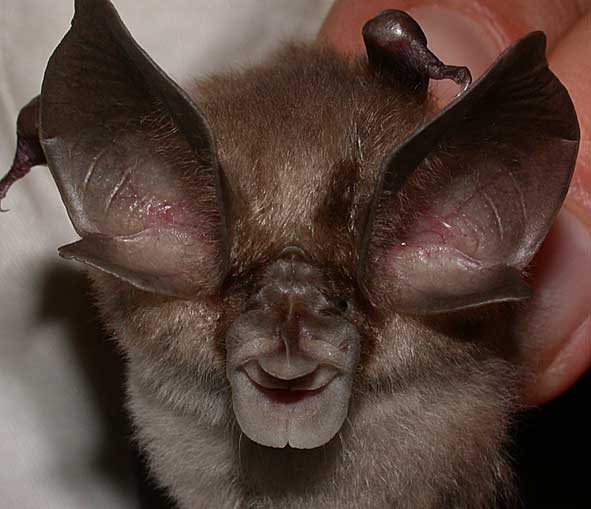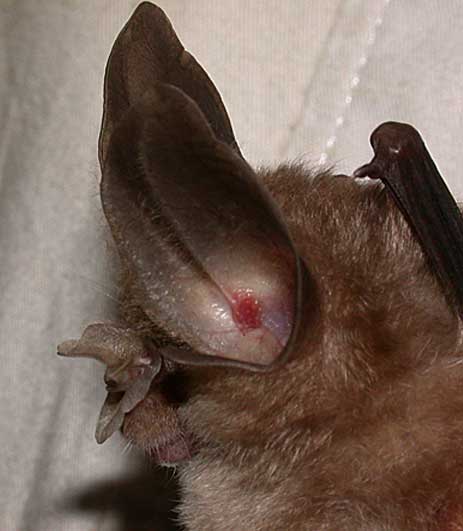Rhinolophus marshalli
Marshall's Horseshoe Bat
Morphological description Life history Distribution Habitat Roost sites and roosting patterns Emergence and flight pattern Foraging behaviour Echolocation calls Status and protection
Morphological Description
· Dorsal fur is dark brown with a reddish tinge. Ventral fur is greyer.
· Forearm length 41.00-48.00mm. (Csorba et al., 2003). Bats that we captured in China had forearm lengths 43.8-47.1 mm (n = 6)..
· Ears long: 24-28mm in Chinese bats.
· The horseshoe is wide, covering the muzzle and has a narrow but deep anterior emargination. The sella is large, broad and slightly higher than wide. The internarial region is greatly expanded, with its edges forming a distinctive wing-shaped structure joined to the base of the sella. The lancet is low, triangular and has a rounded tip. (Csorba et al., 2003).
The bats that we captured in Yunnan were the first ones recorded in China.
Life history
· Little known
Distribution
Myanmar, Thailand, Vietnam and northern Malaysia (Csorba et al. 2003).
In 2003 we captured 6 bats at several small caves near Mile in Yunnan. These are the only records for China.
Habitat
· Little known. Csorba et al . (2003) note that this species is found in dry deciduous and bamboo forests in Thailand, and that it is associated with limestone areas.
Roost sites and roosting behaviour
· Generally roosts in caves and mines. Usually found in small numbers.
· This species often shares cave roosts with other bat species.
Emergence and flight pattern
· Most rhinolophid bats have wing shapes that make them adept at foraging in cluttered environments.
Foraging behaviour
· Not known.
Echolocation calls
The echolocation call is a long constant frequency signal, with a brief frequency-modulated start and tail. Frequencies with most energy recorded from hand-held bats ranged between 39.2-41.6 kHz.
Status and protection
· There is no estimation of population size in China.
· Marshall's horseshoe bats are LR/near threatened, assessed by the Red List of Threatened Species (IUCN, 2006): the species is only known from about 13 localities in south-east Asia, and its biology is little understood. The species is not listed in the Law of the People's Republic of China on the Protection of Wildlife in 1989.
· Caves and forests should be protected as important habitats.

